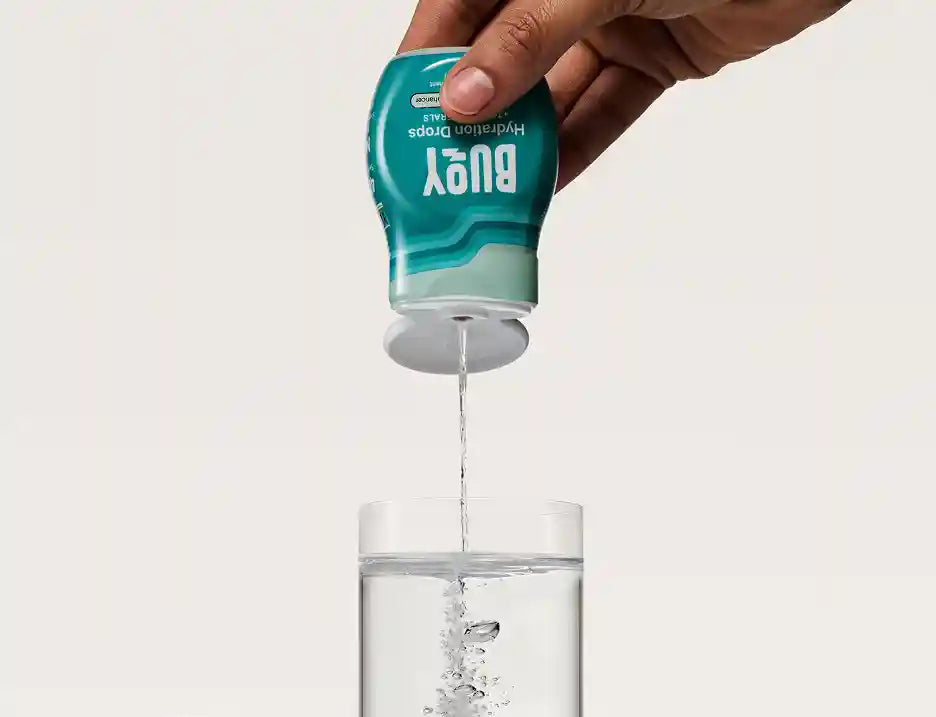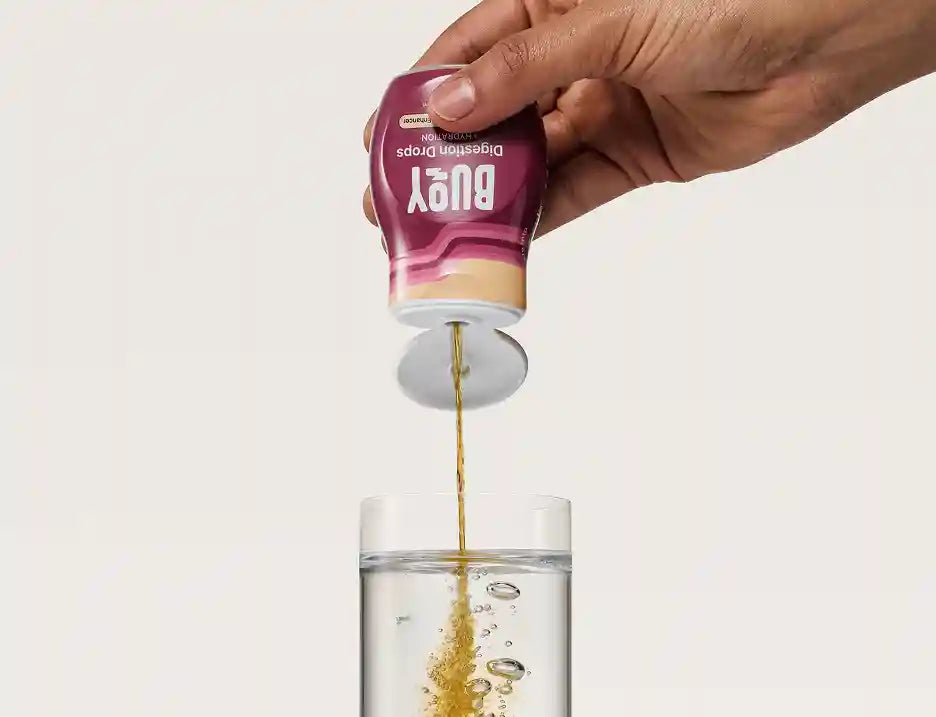
How To Prevent Altitude Sickness
Share
Venturing high up into the mountains can be an exhilarating experience, but if you’re unprepared, altitude sickness can cast a shadow over the adventure.
Altitude sickness, often recognized as a hazard for mountain climbers, can impact anyone spending time at high elevations. Even if you’re physically fit, the rapid decrease in air pressure and oxygen levels can leave you susceptible to altitude sickness.
Symptoms include headache, nausea, dizziness, and shortness of breath. These side effects come from your body reacting to the quick decrease in air pressure and lower oxygen levels that come with being more than 8,000 feet above sea level. This condition can be bothersome and potentially dangerous (1).
In this guide, we’ll discuss the types, causes, and symptoms of altitude sickness and offer preventative measures, including how increased hydration and electrolytes can help.
Essential Takeaways
- Water alone may not be enough to prevent altitude sickness at high elevations. Due to modern water processing methods, water typically doesn’t contain a sufficient amount of electrolytes to counteract the effects of altitude sickness effectively.
- Infused with a potent mix of electrolytes, our flavorless hydration drops are designed to enhance hydration and help your body cope better with high altitudes. Daily use can lead to noticeable improvements in your resistance to altitude sickness and an overall boost in vitality.
- Types, Causes, and Symptoms of Altitude Sickness
- How to Prevent Altitude Sickness
- How to Incorporate Buoy’s Hydration Drops
Types, Causes, and Symptoms of Altitude Sickness
Altitude sickness typically happens when you ascend to high altitudes quickly. At such high altitudes, the air pressure drops, oxygen levels fall, and the body struggles to adjust to these changes by increasing your respiratory and heart rates. However, this adaptation might not be sufficient to compensate for the decrease in oxygen, which leads to symptoms of altitude sickness (2). The early signs of altitude sickness can vary between individuals but often include headache, nausea, dizziness, fatigue, loss of appetite, and shortness of breath (1).
It’s important to understand that altitude sickness isn’t a one-size-fits-all illness. There are three primary forms of altitude sickness: acute mountain sickness (AMS), high-altitude pulmonary edema (HAPE), and high-altitude cerebral edema (HACE). Each type has its own unique set of symptoms and degrees of severity.
Acute Mountain Sickness (AMS)
AMS is the mildest and most common form of altitude sickness, and symptoms are often described as similar to a hangover. While it’s considered the mildest form, AMS can still cause discomfort with symptoms like headache, dizziness, nausea, and shortness of breath.
AMS is the body’s way of telling you it’s not getting enough oxygen. If left untreated, the condition can progress into HAPE and HACE, which are more serious and can be life-threatening.
High-Altitude Pulmonary Edema (HAPE)
HAPE is a more serious form of altitude sickness that can be fatal. This condition occurs when fluid builds up in the lungs, preventing oxygen from being properly absorbed into the bloodstream. Symptoms include shortness of breath at rest, extreme fatigue, a fast pulse, and a cough that may bring up frothy spit.
High-Altitude Cerebral Edema (HACE)
HACE is the most severe form of altitude sickness. Fluid builds up in the brain, causing a range of symptoms from headache, loss of coordination, and confusion to hallucinations, psychosis, and loss of consciousness.
How Long Does It Take to Acclimate to High Altitude?
Typically, it takes a few days to acclimate to a high altitude. However, the process is different for everyone. Some people might take longer to acclimate, while others might adjust more quickly (2). The key is to listen to your body and give it the time it needs to adapt.
Can I Still Get Altitude Sickness If I'm Physically Fit?
Think your rigorous training will shield you from altitude sickness? Think again. Physical fitness does not exempt you from altitude sickness. It's all about how your body adapts to the decrease in oxygen at high altitudes, which can affect anyone, regardless of fitness level (3).
Does Drinking Water Prevent Altitude Sickness?
While staying hydrated is crucial at high altitudes, drinking water alone won't prevent altitude sickness. This is because your body loses not just water, but also electrolytes when you're at high altitudes (3). It’s equally important to replace these electrolytes, which you can do with a balanced diet and supplements like Buoy Hydration Drops.
Remember, prevention is always better than cure when it comes to altitude sickness. Listen to your body, acclimatize properly, stay hydrated, maintain a balanced diet, and take it easy as you enjoy your high-altitude adventures.
How to Prevent Altitude Sickness

If you want to prevent altitude sickness, you need to allow your body to acclimate slowly. You can also help your body adjust in other ways by staying hydrated, avoiding alcohol and caffeine, eating a balanced diet, and getting enough rest.
Staying Hydrated at High Altitudes
Hydration is key when you’re at high altitudes. Your body loses fluids and electrolytes faster due to increased respiration and urination (1). Electrolytes are vital for maintaining fluid balance, muscle contractions, and energy production, but they are often difficult to replenish with diet alone (4).
Why Replenishing Electrolytes Can Be Challenging
To truly understand why electrolytes and minerals are tough to replenish through diet and water alone, we need to break down what electrolytes are and how they function in our bodies.
Understanding Electrolytes and Their Functions
Electrolytes are minerals like sodium, potassium, calcium, and magnesium that conduct electricity when dissolved in water. They're responsible for many important functions in your body, such as maintaining fluid balance, regulating nerve and muscle function, and balancing your body's pH levels (4).
Natural Electrolyte Sources May Not Be Enough
While it's true that our daily diet and regular water intake provide some of these essential electrolytes, they might not be enough, especially in certain situations like physical exertion, illness, or high-altitude conditions.
Here's why:
- High Demand During Physical Activity: During intense activities like mountain climbing or sports, your body sweats and loses electrolytes at a much faster rate. Water alone cannot replenish these electrolytes quickly enough to match the rate of loss (6).
- Increased Loss at High Altitudes: At high altitudes, your body tends to lose fluids and electrolytes faster due to increased breathing and urination. The electrolytes lost through these processes are often hard to replace rapidly and adequately with diet and water alone (2).
- Water Quality: The electrolyte content in water can vary significantly based on the source. Due to modern water processing, tap water and bottled water may not contain high enough levels of electrolytes needed to maintain optimal hydration, especially under challenging conditions such as high altitudes or during intense physical activity.
- Limited Dietary Intake: We often struggle to consume a nutrient-rich and balanced diet daily. Many foods are processed and lack essential minerals and electrolytes our bodies need. Even healthy whole foods may not be much better due to over-farming and soil degradation. Here's a breakdown of the issues:
- Processed Foods: These often lack essential minerals and electrolytes because they're removed during processing.
- Lack of Variety: Eating the same types of foods repeatedly can lead to deficiencies in certain nutrients, including key electrolytes.
- Soil Depletion: Conventional farming methods have resulted in less nutrient-rich produce. You might not be getting enough essential electrolytes, even if you're consuming a diet rich in whole foods (5).
- Bioavailability: Not all nutrients in food are equally accessible to our bodies. Factors such as the type of food, how it's prepared, and individual digestive efficiency can influence how much of a particular nutrient your body can actually use.
Buoy Hydration Drops: A Hydration Game Changer
This is where Buoy's flavorless electrolyte drops really shine. They're designed to provide a concentrated source of essential electrolytes that are easy to add to any drink.
The First of Its Kind
As the first of its kind, Buoy stands out in a market typically dominated by flavored drinks and powders. This is a clear example of their dedication to their customers, understanding that not everyone prefers flavored additives in their beverages.
Beneficial for Chronic Conditions
Buoy drops also make significant contributions to the health of people managing chronic illnesses. Dehydration can exacerbate symptoms of chronic conditions, making hydration essential. Buoy's flavorless electrolyte drops offer a convenient way to maintain proper hydration and electrolyte balance.
A Helping Hand for Your Body
This convenient form of electrolyte replacement supports your body's hydration and overall wellness in situations where diet and water alone may fall short. When you're reaching for those high peaks, Buoy drops give your body a helping hand to stay balanced and healthy.
Preventing Altitude Sickness
Buoy’s flavorless hydration drops contain electrolytes, minerals, and antioxidants to help you stay hydrated and prevent electrolyte imbalances that could lead to altitude sickness. By staying properly hydrated, your body can more easily adjust to high altitudes and reduce the severity of altitude sickness symptoms.
While Buoy’s Hydrating Wellness Drops help manage and prevent the symptoms of altitude sickness, they should not be considered a complete solution. Always consult a healthcare professional before any high-altitude travel, especially if you have any pre-existing conditions or have experienced severe altitude sickness in the past.
How to Incorporate Buoy’s Hydration Drops
Using Buoy's Hydration Drops is easy, but to maximize their benefits, it helps to know when and how to use them.
Preparing for High Altitudes
To prepare for your high-altitude adventure, start adding a squeeze of Buoy to your drinks to hydrate your body before the climb. While at high altitudes, continue to use them in your water, tea, coffee, or even soup to help maintain optimal hydration and electrolyte balance. After your adventure, keep using the drops to aid your recovery and replenish any lost electrolytes.
Remember, everyone's needs are different, and the right amount can depend on many factors, including your activity levels, the climate, and your diet. Always listen to your body and adjust accordingly.
The Importance of Electrolytes for Preventing Altitude Sickness
When preparing for hikes at higher elevation, your body's ability to regulate and maintain optimal hydration and electrolyte balance is crucial. While water is important, it may not provide sufficient electrolytes. That's why supplementing essential electrolytes and minerals with Buoy drops is crucial. By listening to your body and taking preventative measures, you can prevent altitude sickness and enjoy your high-altitude adventures.
Get Buoy for Your Next Adventure
Shop now to learn more and try Buoy for yourself. Stay safe, stay hydrated, and reach new heights with Buoy.
Learn More About Buoy Hydration Drops
References:
- Curtis, R. (1999). Altitude Illness: Prevention & Treatment. Outdoor Action Program, Princeton University. Retrieved from http://www.princeton.edu/~oa/safety/altitude.html
- Luks, A. M., Swenson, E. R., & Bärtsch, P. (2017). Acute High-Altitude Sickness. European Respiratory Review, 26(143), 160096. Retrieved from https://doi.org/10.1183/16000617.0096-2016
- Montain, S. J., Cheuvront, S. N., & Sawka, M. N. (2000). Fluid and Electrolyte Supplementation for Exercise Heat Stress. American Journal of Clinical Nutrition. Retrieved from https://pubmed.ncbi.nlm.nih.gov/10919961/
- Healthline. (2019). Electrolytes: Functions, Imbalance, and Sources. Retrieved from https://www.healthline.com/nutrition/electrolytes
- Davis, D. R., Epp, M. D., & Riordan, H. D. (2004). Changes in USDA Food Composition Data for 43 Garden Crops, 1950 to 1999. Journal of the American College of Nutrition, 23(6), 669-682. Retrieved from https://www.tandfonline.com/doi/abs/10.1080/07315724.2004.10719409
- Shirreffs, S.M., et al. (2004). Fluid and Electrolyte Needs for Preparation and Recovery from Training and Competition. Journal of Sports Sciences, 22(1), pp. 57–63. Retrieved from https://www.tandfonline.com/doi/abs/10.1080/0264041031000140572
- Azoulay, A., Garzon, P., & Eisenberg, M.J. (2001). Comparison of the Mineral Content of Tap Water and Bottled Waters. Journal of General Internal Medicine, 16(3), 168-175. doi: 10.1111/j.1525-1497.2001.04189.x. Retrieved from https://www.ncbi.nlm.nih.gov/pmc/articles/PMC1495189/







